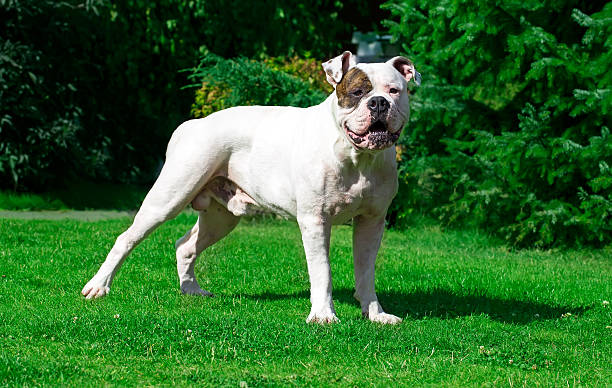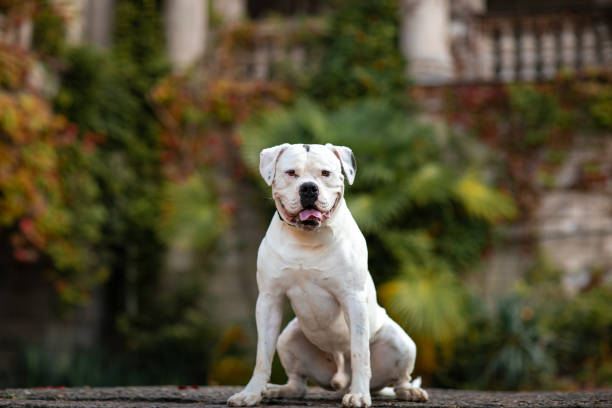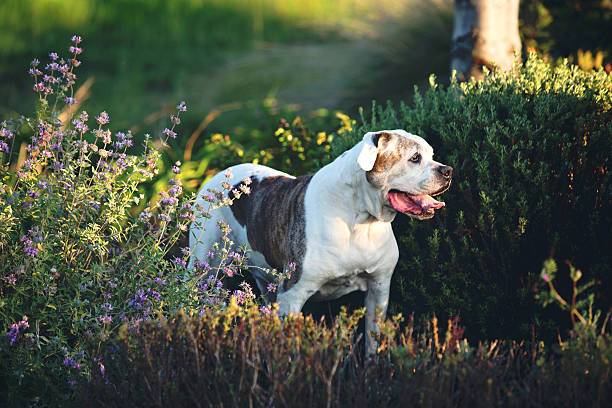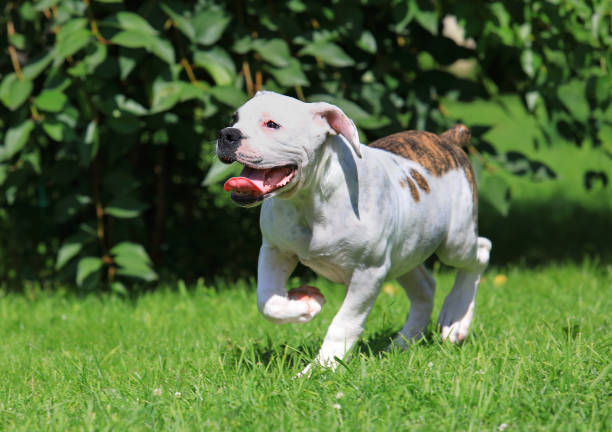American Bulldog

Breed History:
The American Bulldog descends from Old English Bulldogs brought to the American South by working-class immigrants in the 17th and 18th centuries. These dogs were used on farms and ranches for guarding property, catching feral pigs and cattle, and protecting families.
After near extinction in the mid-20th century, the breed was revived by John D. Johnson and Alan Scott, who developed two main types: bully-type (Johnson) and performance-type (Scott)—both emphasising strength, stamina, and loyalty.
Today, the American Bulldog is admired for being a powerful, devoted companion with strong protective instincts and athletic ability.
|
Gender |
Height |
Weight |
|
Male |
55-70 cm |
35-55 kg |
|
Female |
50-65 cm |
30-45 kg |
Size: Large
Life Expectancy: 10–13 years

Breed Appearance:
The American Bulldog is muscular and stocky, with a broad chest, strong jaws, and alert, confident expression. It has a wide head, powerful neck, and distinctive underbite (especially in Johnson lines).
The short, smooth coat comes in a variety of colours, including white, brindle, brown, tan, and combinations with patches.
Despite their tough appearance, American Bulldogs move with agility and purpose, often surprising in their quickness.
Breed Type – Working / Guardian Dog:
A true working dog, the American Bulldog excels as a guardian, hunter, and family protector. It is loyal, courageous, and alert, bonding deeply with its family and often forming a strong protective drive.
It is naturally wary of strangers but affectionate with familiar people. Socialisation and clear leadership are essential to help this dog thrive.

Training:
Bright but strong-willed:
-
Intelligent and eager to work, but can be independent or dominant
-
Needs early and ongoing obedience training
-
Responds best to positive reinforcement with firm, confident leadership
-
May test boundaries—consistency is key
-
Requires socialisation with people and other animals
Best suited for owners with experience in handling large, assertive breeds.
Health & Care:
Generally healthy but can be prone to:
-
Hip and elbow dysplasia
-
Cherry eye (prolapsed third eyelid gland)
-
Brachycephalic breathing issues in some types
-
Skin allergies or mange
-
Obesity if under-exercised
-
Hypothyroidism
Routine vet care, healthy weight maintenance, and regular activity are important for health.

Living Conditions:
Adaptable but needs structure:
-
Can adapt to a house or a large apartment with daily exercise
-
Not ideal for first-time owners or inactive households
-
Needs a secure yard and boundaries indoors
-
Protective instinct means it may not tolerate many visitors or unfamiliar dogs
-
Supervision of small children or pets is necessary
Best in homes with experienced owners, clear routines, and consistent interaction.
Exercise:
High physical needs:
-
Requires 60–90 minutes of daily activity
-
Enjoys walks, hikes, tug games, and agility
-
Mentally stimulated by obedience tasks, scent work, or interactive toys
-
Without exercise, one can become destructive or frustrated
Daily outlets for energy and mental focus are critical.
Grooming:
Low maintenance:
-
Brush weekly to remove loose hair and dander
-
Bathe occasionally or when dirty
-
Clean facial wrinkles and ears regularly
-
Nail trimming and dental care as part of the routine
Sheds moderately year-round, more during seasonal transitions.

Advantages:
-
Devoted and loving family guardian
-
Strong and athletic—excels in work and play
-
Low grooming needs
-
Protective without excessive barking
-
Good with older children when trained
-
Versatile role: watchdog, sport dog, or companion
Disadvantages:
-
Strong-willed and needs experienced handling
-
Not always tolerant of unfamiliar dogs or strangers
-
Prone to certain health issues, especially joints and eyes
-
Requires early socialisation and firm boundaries
-
Can be destructive if bored or under-exercised
-
Not suitable for first-time or passive owners

